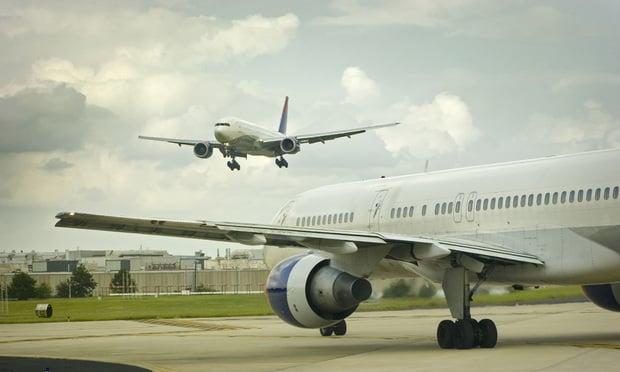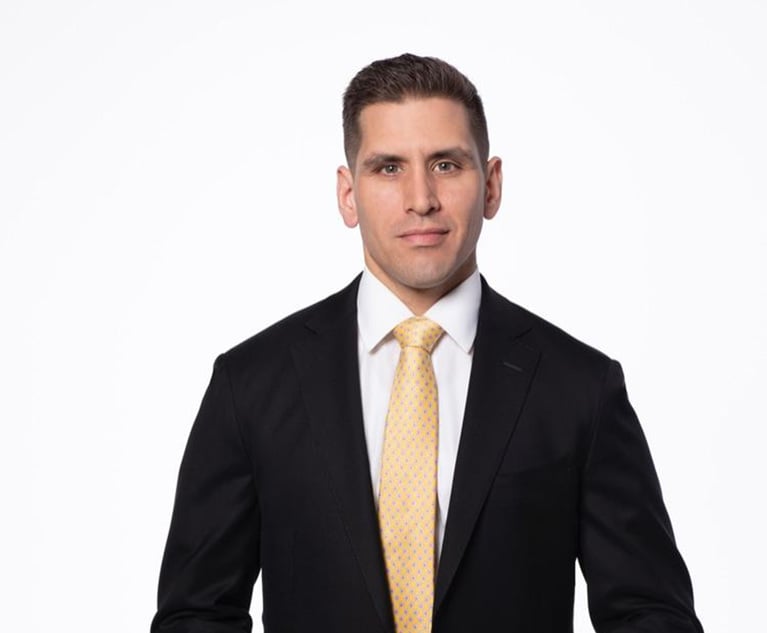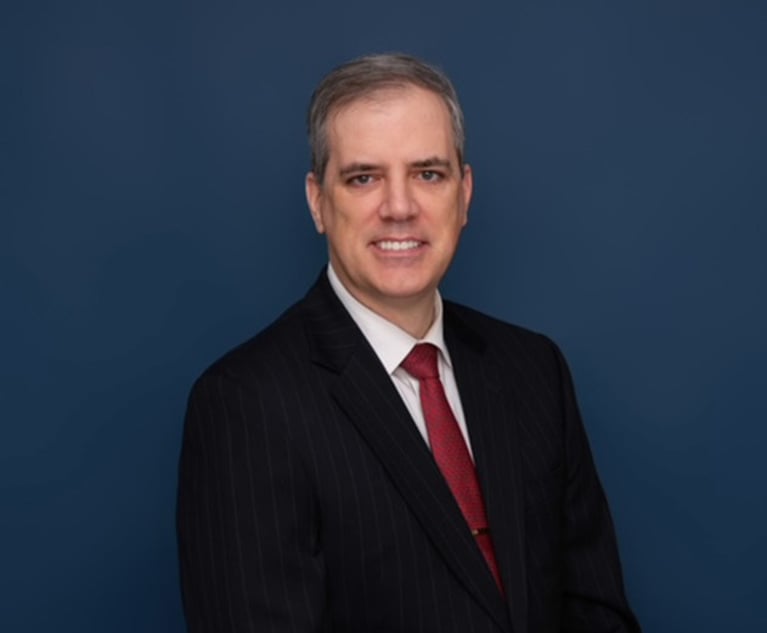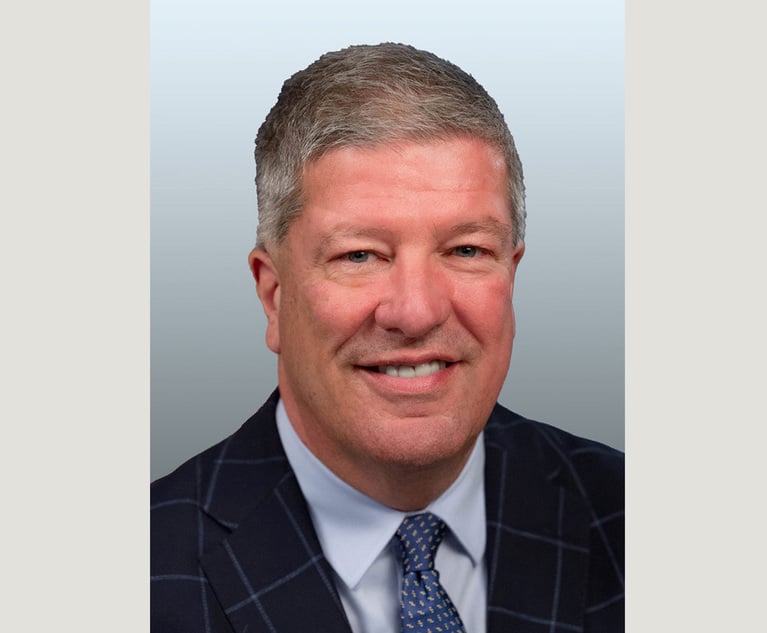Justices Grant Appeal in US Airways Slip-and-Fall Case
In the case of a US Airways flight attendant who was injured in a slip-and-fall aboard an airport shuttle bus, the Supreme Court has agreed to consider when an employee traveling between a parking lot and their workspace is in the course and scope of their employment.
October 11, 2018 at 01:30 PM
3 minute read
 Photo credit: Lars Lindblad/iStockphoto.com
Photo credit: Lars Lindblad/iStockphoto.com
In the case of a US Airways flight attendant who was injured in a slip-and-fall aboard an airport shuttle bus, the Supreme Court has agreed to consider when an employee traveling between a parking lot and their workspace is in the course and scope of their employment.
In US Airways v. Workers' Compensation Appeal Board (Bockelman), a three-judge panel consisting of Commonwealth Court Judges P. Kevin Brobson, Michael H. Wojcik and J. Wesley Oler Jr. rejected US Airways' argument that because the airline did not own the shuttle bus and flight attendant Betty Bockelman was injured outside of her shift hours, she wasn't in the scope of her employment at the time.
According to Brobson's opinion, Bockelman drove to the Philadelphia International Airport every day for work and parked in the employee lot. She would then board a shuttle bus to the terminal and take one at the end of the day to return to the parking lot.
On Jan. 23, 2015, she slipped in a puddle of water in the bus and fell while trying to put her luggage on an overhead rack. She crushed her left foot. She filed a workers' compensation claim and the judge ruled in her favor, holding that the injury occurred on the employer's premises, Bockelman's presence on the shuttle bus was required by the nature of her employment, and her injury was caused by the condition of the premises.
US Airways argued that it did not own the parking lot or the bus, so the injury did not occur on its premises. It also contested that Bockelman was required to use the bus, claiming US Airways never ordered employees to use any specific mode of transportation to get to work.
However, Brobson said that US Airways knew employees relied on the buses to get to work from the parking lot.
“As part of doing business with the airport, employer understood that the airport would transport employer's employees who drove to work. Thus, employer also understood that, in order to arrive at their work area to start their shift, employees who drive to work invariably board the shuttle bus after their commute to the airport,” Brobson said.
“Similarly,” he continued, “employer also understood that, in order to leave their work area at the end of their shift, employees who drive to work invariably board the shuttle bus to return to their vehicle. Accordingly, the shuttle bus is such an integral part of employer's business as to be part of the premises, in addition to being a customary means of ingress and egress, and the [workers' compensation judge] correctly concluded as such.”
The justices granted allocatur in the case Oct. 3 agreeing to consider a single question: “Is the Commonwealth Court's order contrary to long-standing case law from the Commonwealth Court holding that an employee is not in the course and scope of employment while traveling between a parking lot and the workplace unless the employer mandates how an employee commutes to work and/or where the employee must park his/her vehicle?”
Kimberly A. Zabroski of Littler Mendelson in Pittsburgh represents US Airways and could not be reached for comment.
Alfred J. Carlson III of Martin Law in Philadelphia represents Bockelman and called it “an honor and a privilege” to have the Supreme Court hear the case.
He added that he and his client are “optimistic the Supreme Court will affirm the lower courts.”
This content has been archived. It is available through our partners, LexisNexis® and Bloomberg Law.
To view this content, please continue to their sites.
Not a Lexis Subscriber?
Subscribe Now
Not a Bloomberg Law Subscriber?
Subscribe Now
NOT FOR REPRINT
© 2025 ALM Global, LLC, All Rights Reserved. Request academic re-use from www.copyright.com. All other uses, submit a request to [email protected]. For more information visit Asset & Logo Licensing.
You Might Like
View All


Stevens & Lee Hires Ex-Middle District of Pennsylvania U.S. Attorney as White-Collar Co-Chair
3 minute read
Judge Tanks Prevailing Pittsburgh Attorneys' $2.45M Fee Request to $250K
5 minute readTrending Stories
- 1Greenberg Traurig Launches Munich Office with Eight Hires, Including McDermott Group
- 2Midlevel Appellate Court Reinstates New York's Voting Rights Act
- 3Consumer Protection Suit Cleared to Go Forward Against Irritating Eye Serum
- 4COVID-19 Was Still Relevant in Securities Class Actions During 2024, Report Says
- 5After Botched Landing of United Airlines Boeing 767, Unlikely Plaintiff Sues Carrier
Who Got The Work
J. Brugh Lower of Gibbons has entered an appearance for industrial equipment supplier Devco Corporation in a pending trademark infringement lawsuit. The suit, accusing the defendant of selling knock-off Graco products, was filed Dec. 18 in New Jersey District Court by Rivkin Radler on behalf of Graco Inc. and Graco Minnesota. The case, assigned to U.S. District Judge Zahid N. Quraishi, is 3:24-cv-11294, Graco Inc. et al v. Devco Corporation.
Who Got The Work
Rebecca Maller-Stein and Kent A. Yalowitz of Arnold & Porter Kaye Scholer have entered their appearances for Hanaco Venture Capital and its executives, Lior Prosor and David Frankel, in a pending securities lawsuit. The action, filed on Dec. 24 in New York Southern District Court by Zell, Aron & Co. on behalf of Goldeneye Advisors, accuses the defendants of negligently and fraudulently managing the plaintiff's $1 million investment. The case, assigned to U.S. District Judge Vernon S. Broderick, is 1:24-cv-09918, Goldeneye Advisors, LLC v. Hanaco Venture Capital, Ltd. et al.
Who Got The Work
Attorneys from A&O Shearman has stepped in as defense counsel for Toronto-Dominion Bank and other defendants in a pending securities class action. The suit, filed Dec. 11 in New York Southern District Court by Bleichmar Fonti & Auld, accuses the defendants of concealing the bank's 'pervasive' deficiencies in regards to its compliance with the Bank Secrecy Act and the quality of its anti-money laundering controls. The case, assigned to U.S. District Judge Arun Subramanian, is 1:24-cv-09445, Gonzalez v. The Toronto-Dominion Bank et al.
Who Got The Work
Crown Castle International, a Pennsylvania company providing shared communications infrastructure, has turned to Luke D. Wolf of Gordon Rees Scully Mansukhani to fend off a pending breach-of-contract lawsuit. The court action, filed Nov. 25 in Michigan Eastern District Court by Hooper Hathaway PC on behalf of The Town Residences LLC, accuses Crown Castle of failing to transfer approximately $30,000 in utility payments from T-Mobile in breach of a roof-top lease and assignment agreement. The case, assigned to U.S. District Judge Susan K. Declercq, is 2:24-cv-13131, The Town Residences LLC v. T-Mobile US, Inc. et al.
Who Got The Work
Wilfred P. Coronato and Daniel M. Schwartz of McCarter & English have stepped in as defense counsel to Electrolux Home Products Inc. in a pending product liability lawsuit. The court action, filed Nov. 26 in New York Eastern District Court by Poulos Lopiccolo PC and Nagel Rice LLP on behalf of David Stern, alleges that the defendant's refrigerators’ drawers and shelving repeatedly break and fall apart within months after purchase. The case, assigned to U.S. District Judge Joan M. Azrack, is 2:24-cv-08204, Stern v. Electrolux Home Products, Inc.
Featured Firms
Law Offices of Gary Martin Hays & Associates, P.C.
(470) 294-1674
Law Offices of Mark E. Salomone
(857) 444-6468
Smith & Hassler
(713) 739-1250





